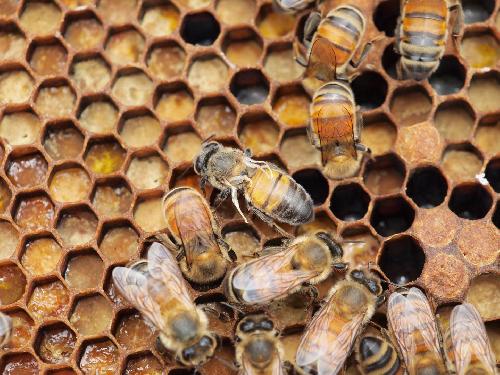A new analysis of one of the most widespread honeybee viruses, deformed wing virus, or DWV, shows that the virus has gone from an endemic to a global epidemic because of greater movement of a major vector, the Varroa mite. The mite has spread in large part due to human trade of the bee colonies it infests. The study contributes greatly to scientists' understanding of the globally pressing issue of pollinator health by describing the worldwide transmission routes and dynamics of DWV based on analysis of a new and large molecular data set. Previous evidence indicates that the presence of the mite Varroa increases the spread of DWV across honeybee populations, not only by acting as a vector but also by increasing the virulence of the virus. While scientists have a grasp on how Varroa affects DWV spread at the individual and colony level, its importance to the global spread of DWV is less well understood; some scientists think the mite became an important factor when it expanded from its native host, the Asian honeybee, to the European honeybee - then going on to cause an epidemic of DWV. Others think DWV was native in the European honeybee but reemerged because of the mite's increasing presence. Here, to better understand how the Varroa mite has impacted global DWV spread, Lena Wilfert and colleagues used molecular sequencing of the virus and mites from 32 locations in 17 countries. The researchers estimated the major routes of the virus's spread by comparing geographic and host-specific patterns. Their results lend support to the idea that DWV is an endemic honeybee pathogen of the European honeybee that has recently reemerged through the spread of Varroa as a vector. To reduce the negative effects of DWV on pollinators, tighter controls, such as mandatory health screenings and regulated movement of honeybees across borders, should be imposed, the authors say. A Perspective provides additional insights.





Comments